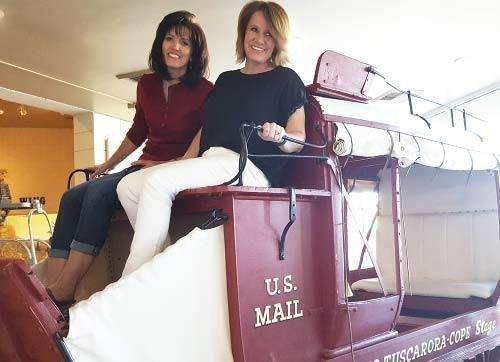Press Release
Little is known about the soldiers of Johnson’s Army sent to Utah in 1858 to quell what turned out to be a nonexistent “Mormon rebellion.” In “The Unknown,” Discovery Road, the educational TV series produced by the Mormon Pioneer National Heritage Area (MPNHA), tells their story. The soldiers stayed three years in what became known as Camp Floyd, “observing” the Mormons but during that time left a lasting mark on the town of Fairfield, Utah County, and the surrounding area. While there was no conflict, soldiers died and were buried during those years. Since the Army did not have any cemeteries, they were buried by their comrades in arms in a makeshift cemetery on camp property.
While records were kept of the dead and the fact they were buried in the camp cemetery, no records were
made of which graves held the remains of specific soldiers. Today, the landscape is spotted with scores of graves carrying nothing more than the word “Unknown” on their headstones. While much is known about the soldiers and their brief sojourn in Utah, little is recorded about the civilians, especially those who left Fairfield and other Utah communities for other climes.
“The Unknown” then shifts gears to focus on David and Ann Bona, 1853 Mormon emigrants from Swansea, Wales, who, after nine years in Spanish Fork, Utah, left for California, never to return. In this episode, their descendants Charlene Heaton and Renè Bona Clarke, who are cousins, follow the route of the family, along the way encountering the story of stagecoach driver Charlie Parkhurst, a woman who disguised herself as a man to
pursue the life she wanted.
“Religious beliefs, family struggles, economics or dreams for a better life in the Golden State of California are some of the reasons” Mormon pioneers turned their backs on their fellow converts in Utah and headed to California, Clark says.
Heaton and Clarke stop to visit Hyrum Carter’s rock wall in a desolate stretch of Nevada, built as a monument to the early pioneers who passed that way. They also visit historic Virginia City, Nev. and a mass gravesite in Colma, Calif. where thousands of early California pioneers were re-buried after their original cemeteries were taken over for other development.
Then the cousins embark on the reason for the trip: An a empt to solve the more than 150-year family mystery of what happened to David and Ann’s son, William. As a young man, he le California and returned to
Spanish Fork, Utah, where he married a woman he had known back in Wales.
In 1910, at age 71, he traveled to California to visit his sister, and then walked a block or two to visit a niece. After the visit, he disappeared. In the end, the search is fruitless but the journey has its own rewards. “I was able to meet someone in my family I had not met before. We were able to connect and share stories about the ancestry and the history. And although we did not find out exactly what happened to our ancestors, we were able to walk the streets that they walked and find a sense of peace and that was invaluable,” Clarke said. “I would suggest that everybody take the time to make that trip and research their ancestors, walk where they walked and discover things that you may not have known before. What you get is invaluable.”

